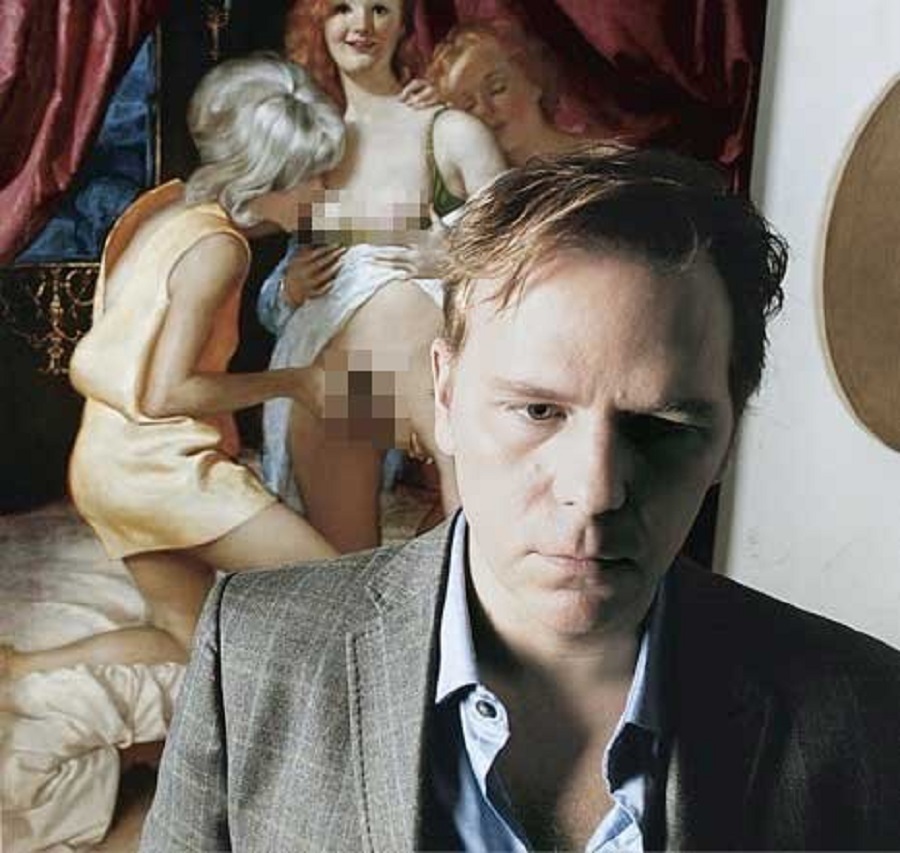John Currin was born in 1962 in Boulder, Colorado. He studied art in the United States at a number of different art schools.
His figurative style of painting unapologetically focuses on human sexuality and often on gestures and poses. He at once admires and transforms the work of the great Masters, and his approach to femininity is overtly satirical and subtly provocative.

His broad knowledge of 19th-century forms of painting — in terms of colour, composition and overall aesthetic — by French and Renaissance artists can be seen in his work, as well as his references to a wide variety of artistic movements.
The artist’s work represents a fascinating dialogue between contemporary and high culture, comfortably mixing painting with popular magazines and models while deforming the female body. These are clearly bourgeois works which play on the mix between irony and 80s sentimentality. In the female portraits in particular, the influence of Cranach and Italian mannerism is evident.
Currin’s fascination with body cult, social hypocrisy and sexual desire is present in works such as “Thanksgiving” (2003), where moral freedom is portrayed in the faces of three women feasting: a reference to modern society’s vulgarity within a scene of great beauty.

In the past he has participated in collective shows together with other great painters in New York’s Whitney Museum and also in London’s Whitechapel gallery, but his first solo exhibition was “Mid-Career Retrospective” at the MCA in Chicago, consisting of works from the 90s to the present day which subsequently made their way to London’s Serpentine Gallery.
Currin’s style has been called misogynistic and pornographic, but that’s not stopped his paintings from enjoying huge commercial success.
In “The Dogwood Thieves” (2010), displayed in the Gagosian Gallery, the bright red ribbon is a clear example of the sharpness of his vision — although Currin faithfully represents the details of life, the end image is almost unnatural, and it’s precisely these small natural/unnatural details which carve him apart from other painters of his generation. Each minute detail gives off a grotesque, absurd effect, which at the same time transmits to the viewer the artist’s great skill.

Another of his important works is “The Women of Franklin Street” (2009): the sexually explicit painting represents three loosely dressed women — the one in the middle clearly displaying a sadistic demeanour through her almost frozen facial expression — in a scene that somewhat furthers the idea of the female form as object.

Admittedly, some of his paintings seem to be mocking society’s moral values, but for all of their pornographic content, they are still technically excellent pictorial works.
Currin is often criticized for being a masculine artist whose representations of women are simply of bad taste, yet the controversy and different interpretations of his creative work only serve to heighten his appeal and interest among the public.
His paintbrush is provocative, yet it manages to skillfully make art out of the tasteless. He combines the traditional with the contemporary in his drive to show us ugly, grotesque figures, without judgement, with a mix of sensuality and common vulgarity.
“I've always liked things that pretend they're sensationalistic entertainment yet have a hidden or deeper structure — something that's absolutely mediocre but perfect, like a soft rock song that's perfectly memorable, that has this incredibly long life and persistence, that's so average but crystalline.” John Currin.








